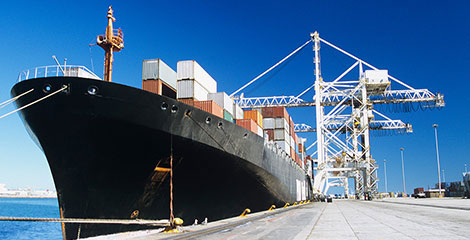The Court of International Trade, a specialized federal court in New York, on Wednesday ruled that most of President Donald Trump’s tariffs–including those on Chinese goods–are illegal. The court let stand the tariffs on specific sectors such as steel and aluminum.
“The challenged Tariff Orders will be vacated and their operation permanently enjoined,” the three-judge panel ruled. The ruling would reduce the effective U.S. tariff rate to below 6% from a high of almost 27% last month, according to Bloomberg calculations..
Hours after the ruling from the Court of International Trade a federal appeals court acted to stay the ruling pending an appeal by the Trump Administration. That leaves the Trump tariff schedule in place until a decision on the appeal
At issue in the lawsuits before the Court of International Trade was President Donald Trump’s ability to use executive orders under the 1977 the International Emergency Economic Powers Act or IEEPA to impose sweeping tariffs on global trade or on goods from individual countries.
The court noted that IEEPA says the president may only use his emergency powers “to deal with an unusual and extraordinary threat with respect to which a national emergency has been declared.” President Trump pointed to the merchandise trade deficit that the United States has run each year since 1975 as the “emergency” justifying his sweeping tariffs. Wednesday’s ruling also applies to other tariffs that the president imposed on Mexico and Canada, citing an emergency over illegal migration and drug trafficking, and China for its alleged role in facilitating production of the opioid fentanyl.
The trade court rejected those tariffs, saying they failed to meet the law’s requirement that they “deal with an unusual and extraordinary threat.” Instead of addressing the president’s stated objective of curbing illicit cross-border trafficking in people and drugs, the tariffs were designed to “create leverage” to get other governments to do so, the court said.
The decision to stay the ruling by the U.S. Court of Appeals for the Federal Circuit provides Trump a temporary reprieve from the ruling threatening to throw out the bulk of his sweeping tariff agenda. There remains the possibility that the appeals court could ultimately back the original ruling. Separately, a second federal judge declared a number of Trump’s levies enacted using emergency powers unlawful, but limited his decision to the family-owned businesses that sued and delayed the order from taking effect for 14 days to allow the Justice Department time to appeal.
Even if the appeals court ultimately throws out Trump’s tariffs, the White House has other options–but they all have their own drawbacks. “There are different approaches that would take a couple of months to put these in place and using procedures that have been approved in the past or approved in the last administration, but we’re not planning to pursue those right now,” National Economic Council Director Kevin Hassett said on Fox Business.
For example, the Trump administration has invoked Section 232 of the Trade Expansion Act to set the stage for sweeping levies that could touch everything from smartphones to jet engines. Since Trump took office in January, the Commerce Department has already enacted Section 232 tariffs on on steel, aluminum, vehicles and auto parts, and launched investigations on trucks, copper, lumber, semiconductors, critical minerals, pharmaceuticals and aircraft.
Those tariffs are less legally vulnerable than Trump’s ad-hoc nation-by-nation approach, but take months to enact. The probes typically produce findings within 270 days, but administration officials have stressed they can go faster. The trade court’s ruling also nodded to Section 122 powers–which Trump could use to impose tariffs on nations of as much as 15%, but only for about five months.
And then there’s Section 301 of the US Trade Act of 1974, which Trump has used to enact previous tariffs on China. Section 301 empowers presidents to take a range of actions–not just tariffs–to address unfair policies seen as restricting U.S. commerce.
I don’t see any signs that the Trump Administration is about to back off on its tariff agenda. What today’s ruling and the stay of that ruling do is inject even more uncertainty into the economy. How can any CEO commit to a capital spending plan without knowing the basic rules of the game going forward? In a different universe, this uncertainty might be enough to delay the rush to push the administration’s spending bill through Congress since the price tag for that measure relies on substantial tariff revenue to offset the deficit produced by tax cuts. In this universe, however, I expect Republicans to push forward with the spending bill


